1.5 Viruses and Subviral Particles
1/31
There's no tags or description
Looks like no tags are added yet.
Name | Mastery | Learn | Test | Matching | Spaced |
|---|
No study sessions yet.
32 Terms
HIV Cycle
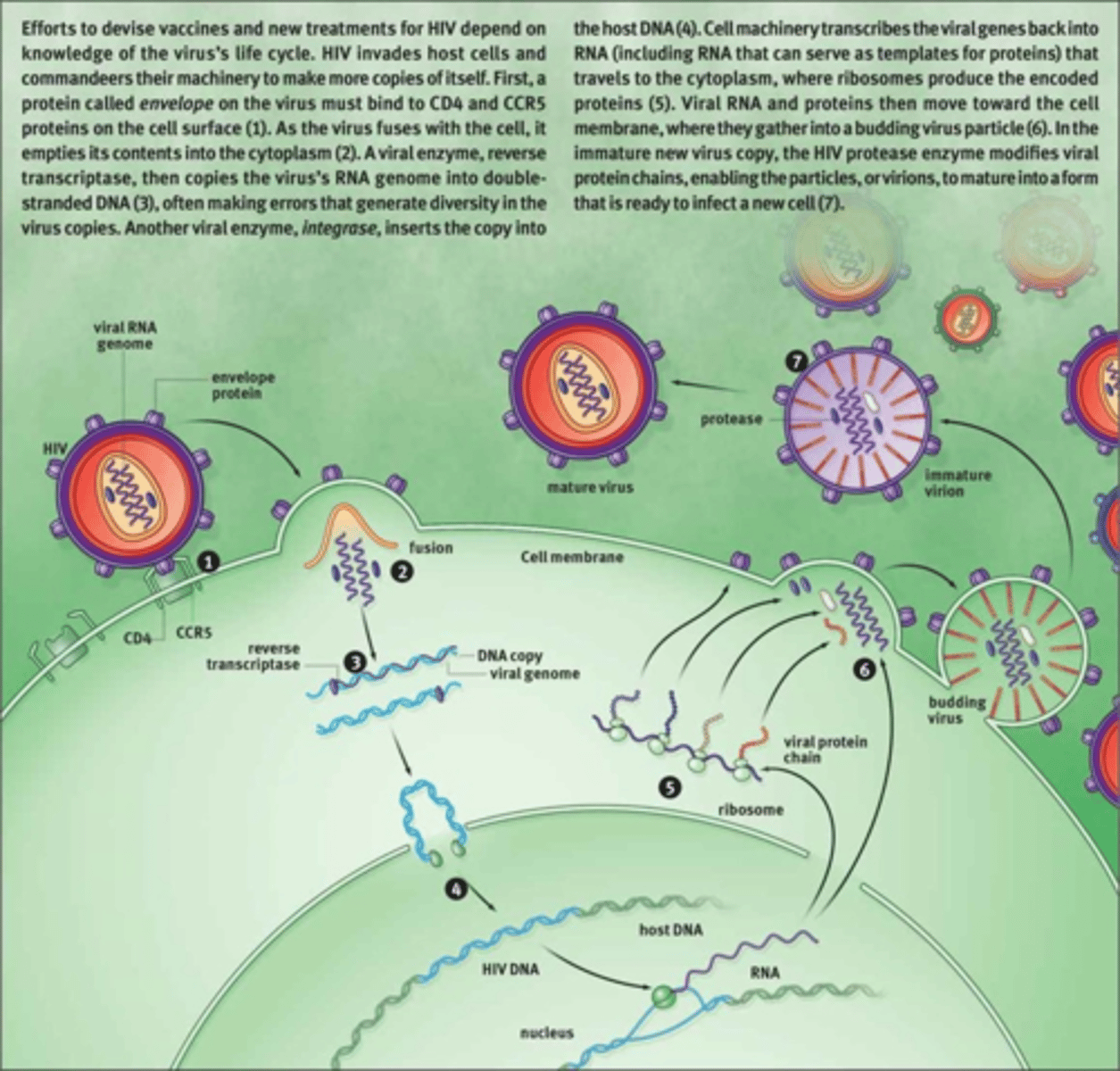
Capsid
Viral protein coat.
Envelope
In some viruses, it surrounds the capsid and is composed of phospholipids and viral specific proteins.
Enveloped Viruses
Easier to kill.
Virions
After hijacking the host cell's machinery, a virus will replicate and produce these progeny. This is the complete and infective form of a virus when it is outside of the cell.
Bacteriophages
Viruses that specifically target bacteria. They do not actually enter the cell, but they inject their genetic material.
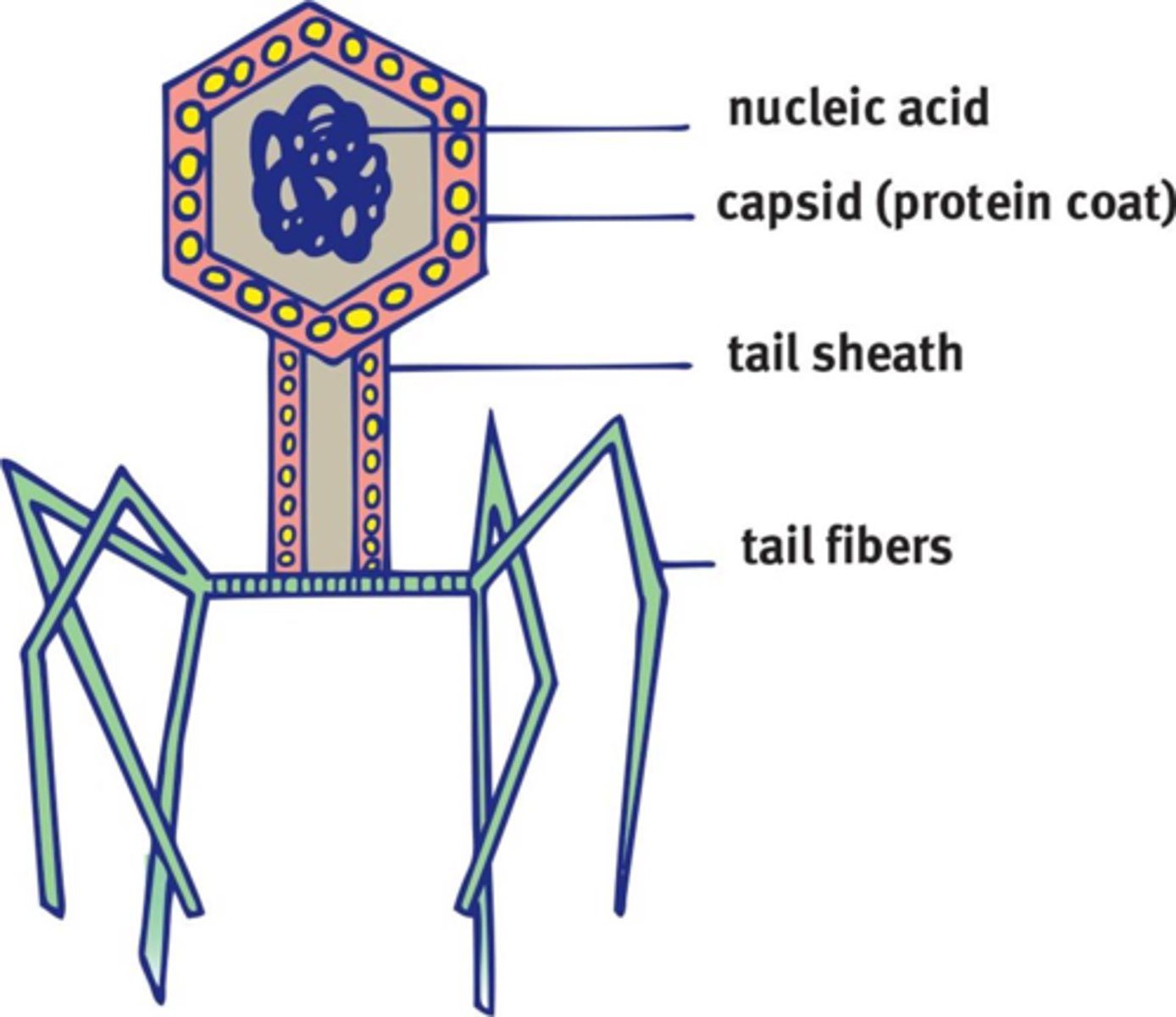
Tail Sheath
Special structure on bacteriophages that is used to inject genetic material into the bacterium.
Tail Fibers
Special structures on bacteriophages that help the virus recognize bacterial cells.
Positive Sense
The type of single-stranded RNA viruses that can have their genes directly translated into functional proteins just like mRNA.
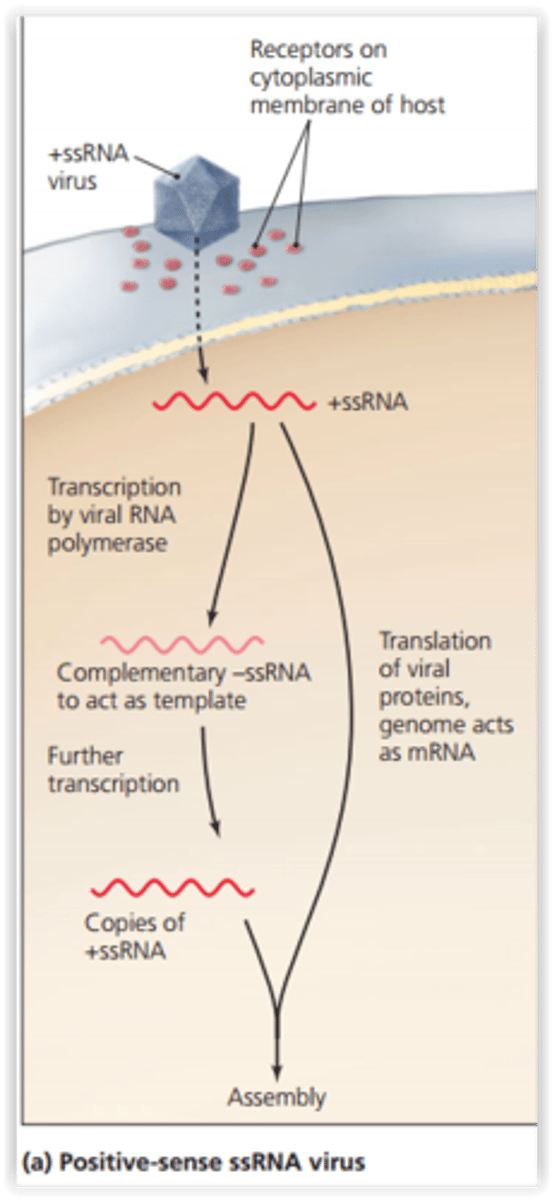
Negative Sense
The type of single-stranded RNA viruses that require synthesis of an RNA strand complementary to the negative sense strand. They must carry RNA replicase.
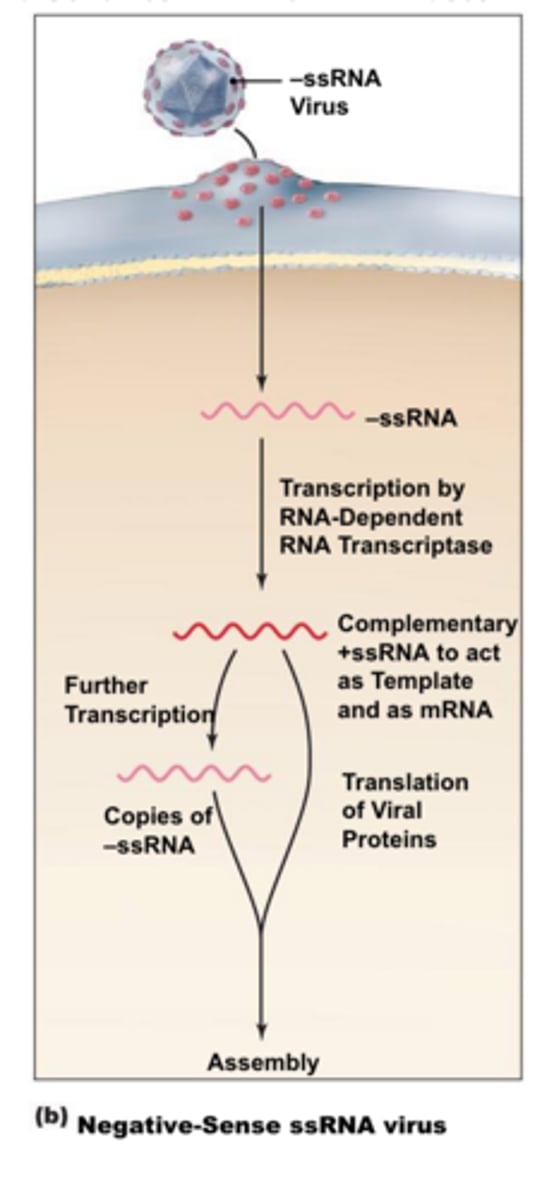
RNA Replicase
Carried in the virion of negative sense RNA viruses to ensure that the complementary strand is synthesized.
Retroviruses
Enveloped, single-stranded RNA viruses whose virion contains two identical RNA molecules. They must carry reverse transcriptase. The DNA product then can incorporate into the host's genome.
Hemagglutinin
One of the enzymes found on the surface of the influenza virus. It is responsible for binding the virus to the cell that is being infected.
Neuraminidase
Helps release virions from the host cell after replication and assembly.
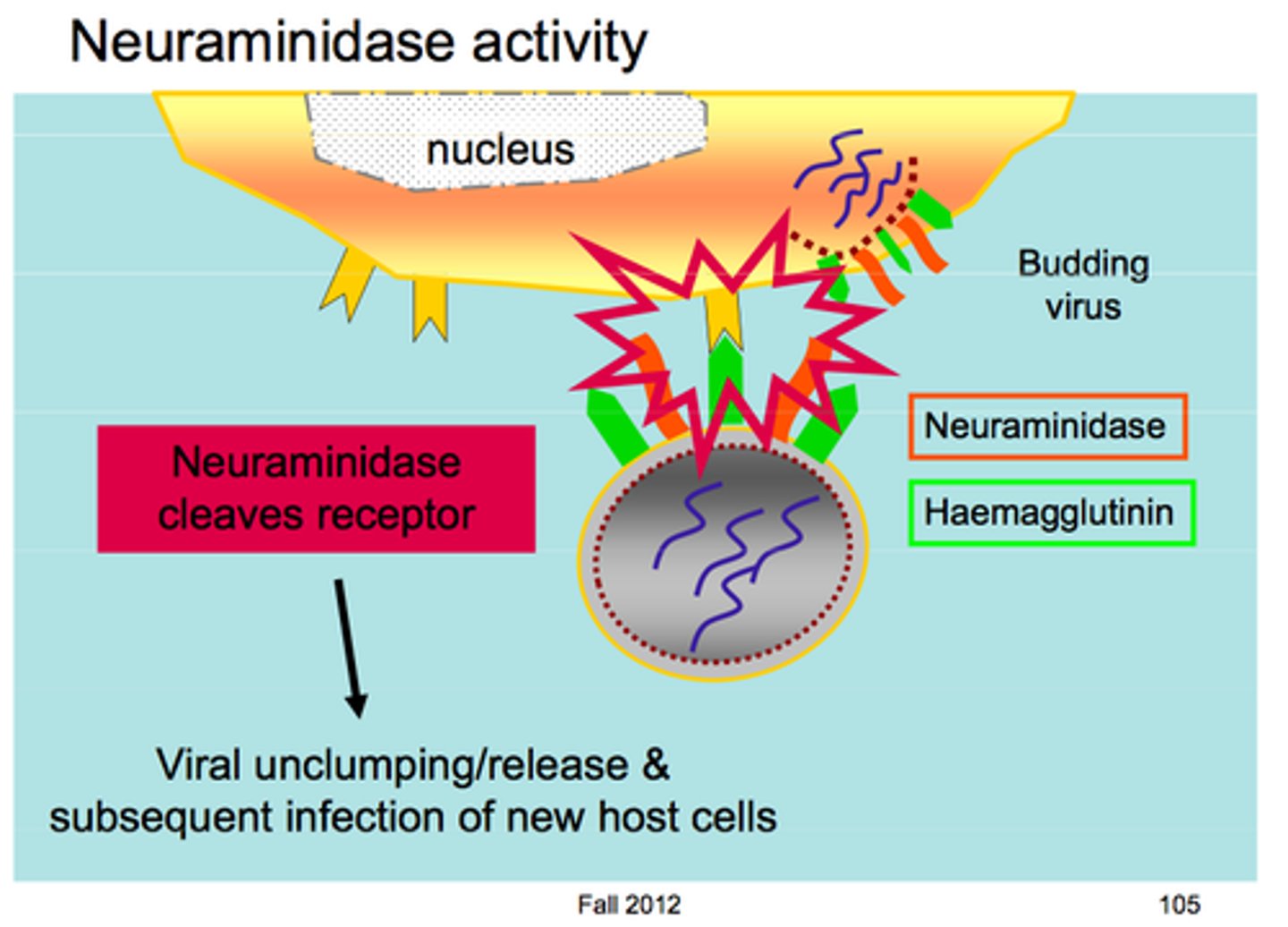
HIV
Example of a retrovirus that exemplifies the ability of retroviruses to infect a host cell indefinitely. Binds to CCR5 on WBCs, and some cells lack CCR5 and are immune to HIV, i.e. the Berlin Patient.
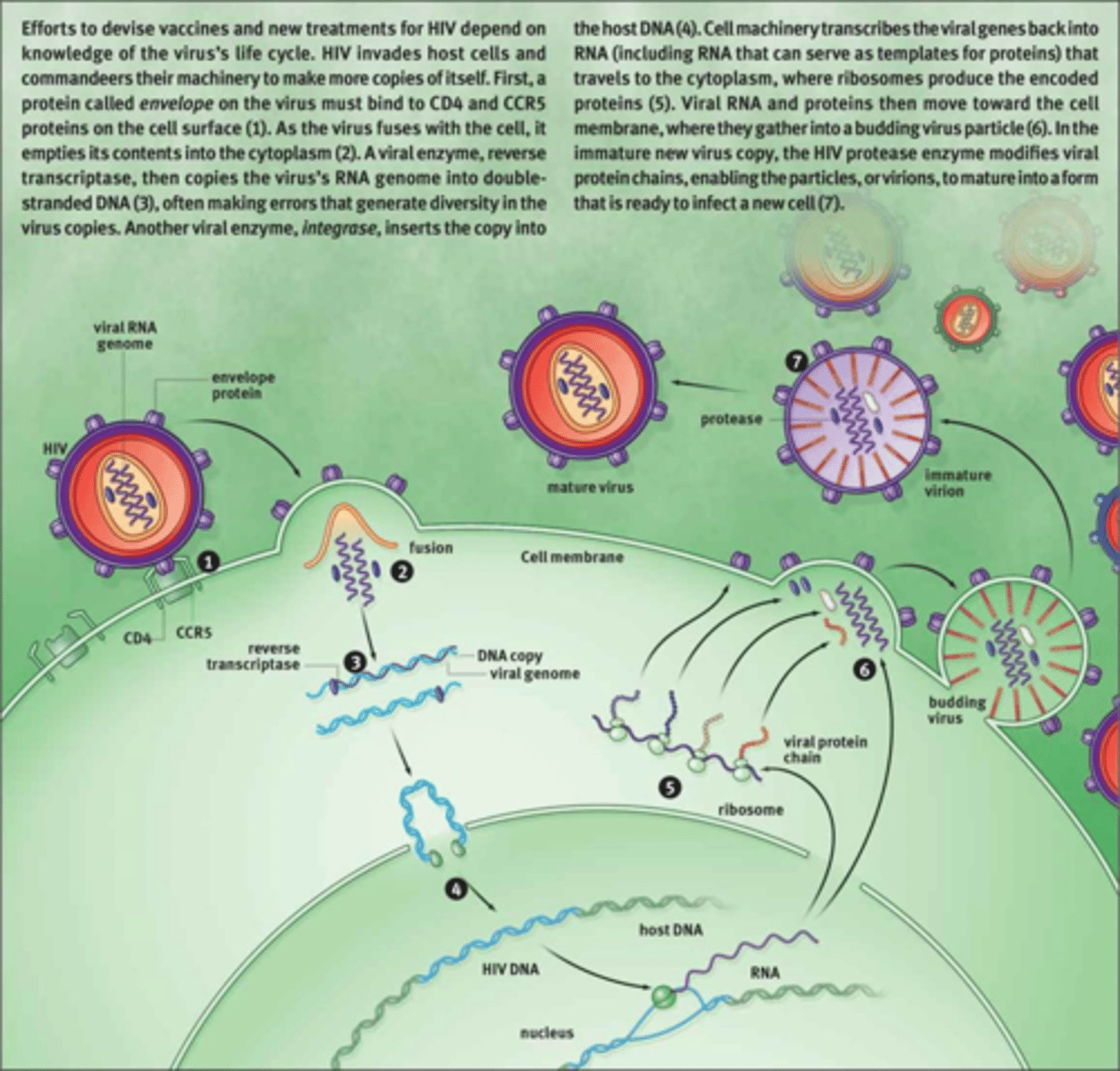
Infection
Viruses infect a specific set of cells by binding to membrane proteins on the host cell. Enveloped viruses fuse with the plasma membrane. Other viruses are sometimes brought in being mistaken as nutrients.
Extrusion
The process of releasing virions by fusing with the plasma membrane.

Host Cell Lysis
When large numbers of virions are produced, the host cell may become too large and then pop.
Host Cell Death
Some viruses can cause the host cell to die and spill the progeny.
Productive Cycle
When viruses that leave the cell through extrusion leave the host alive and can continue to replicate through its machinery.
Lytic Cycle vs. Lysogenic Cycle
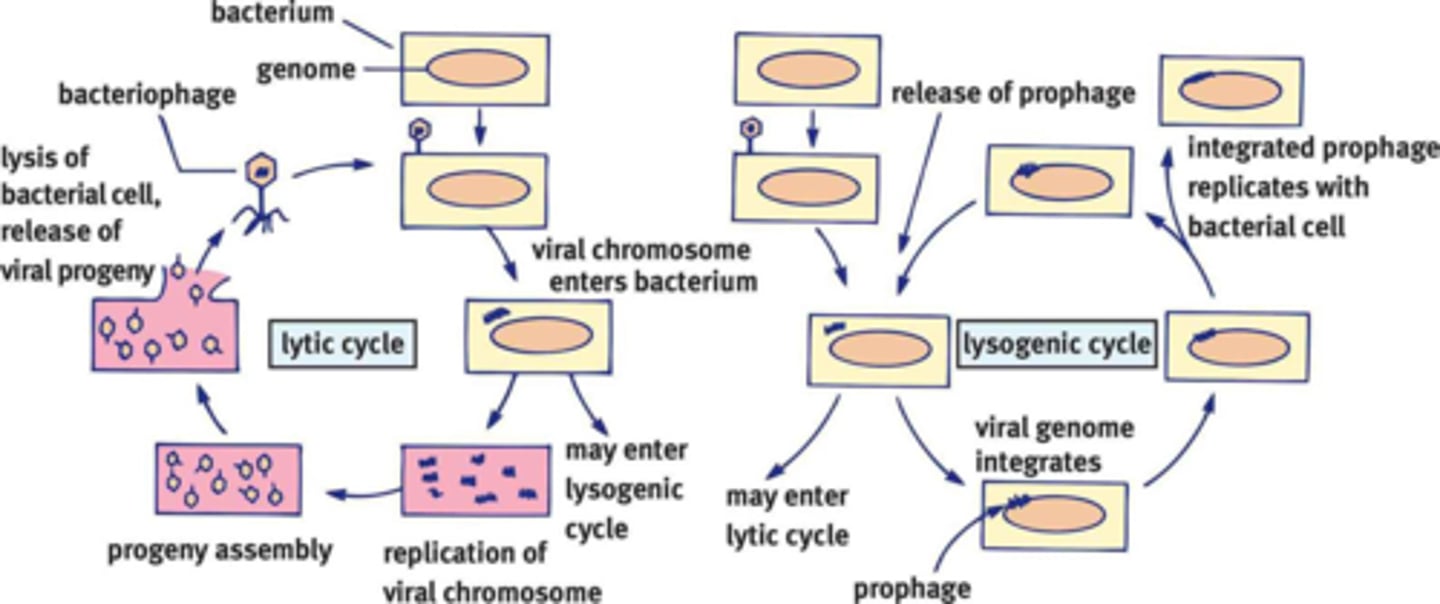
Lytic Cycle
When bacteriophages continuously reproduce with no regard for the life of the host cell.
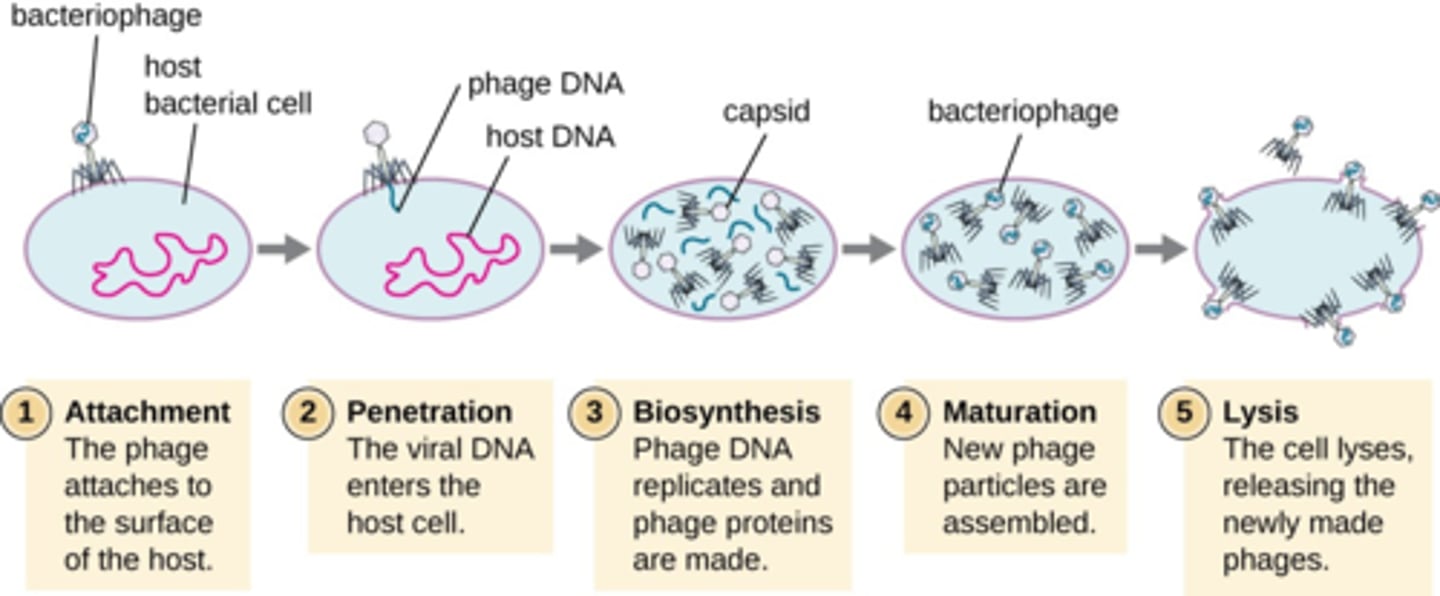
Virulent
Bacteria that are infected by lytic cycle bacteriophages.
Provirus
When a bacteriophage incorporates into the host genome and allows the cell to continue to survive.
Prophage
Another name for provirus.
Lysogenic Cycle
When a provirus incorporates into the host cells genome and can be reproduced along with the bacteria. Eventually, environmental factors cause the provirus to leave.
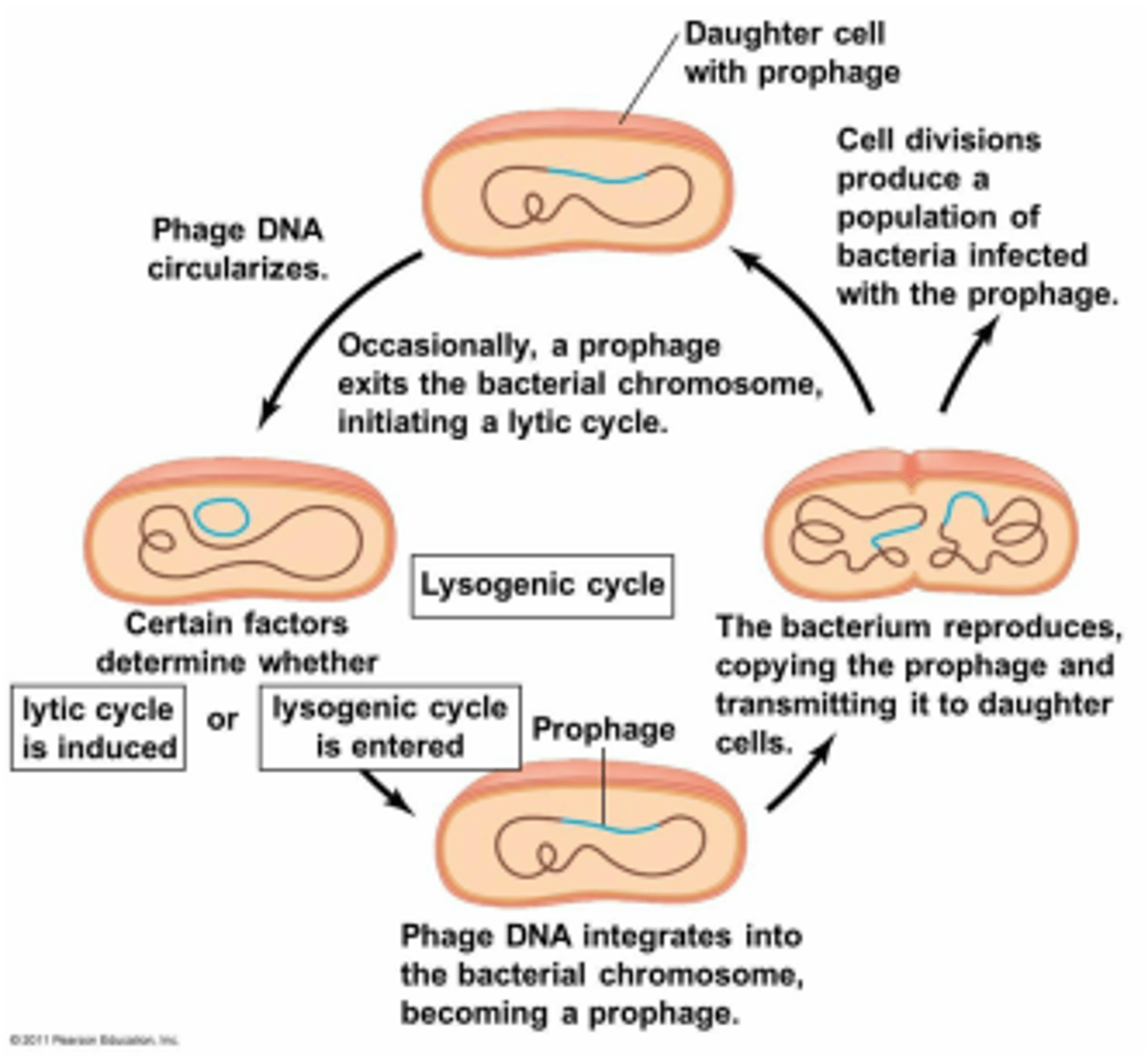
Bacterial Transduction
When proviruses leave the host cell's genome, they may drag some of the host's genetic material with it which can then be transduced when the provirus infects a new bacterium.
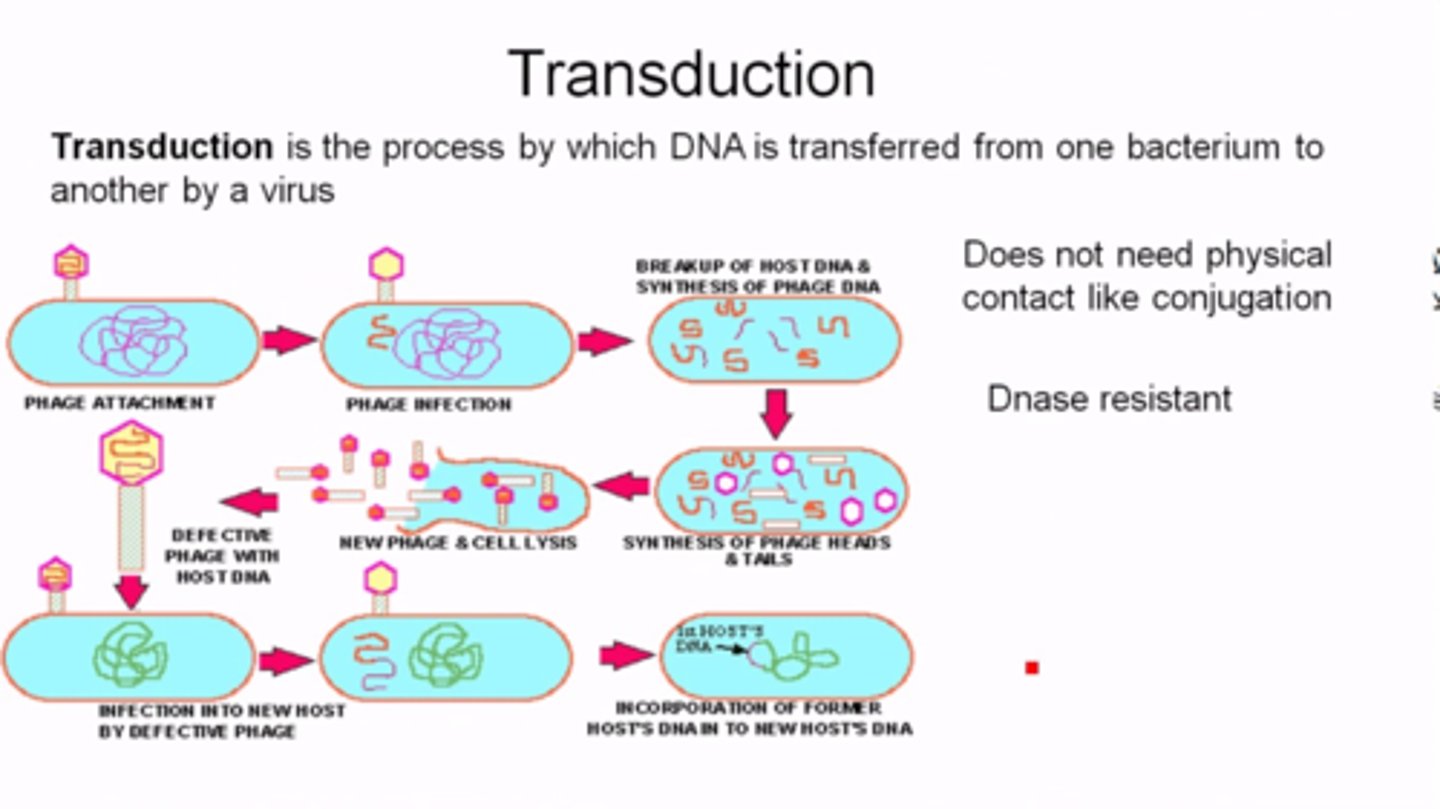
Superinfection
When a bacterium becomes infected by more than one phage. Infection with one strain of phage makes the bacterium less susceptible to being infected again.
Prions
Infectious proteins that cause other proteins to misfold. Usually, they cause the conversion of alpha helices into beta pleated sheets. This drastically reduces protein solubility, thus causing aggregation and loss of function.
Creutzfeldt-Jakob Disease
Common prion disease.
Viroids
Common plant pathogens that carry very short, circular strands of RNA. Bind to, and silence genes in the plant genome.
Hepatitis D Virus
Human viroid that is innocuous by itself, but when combined with HBV, it can exert its silencing function on human hepatocytes.